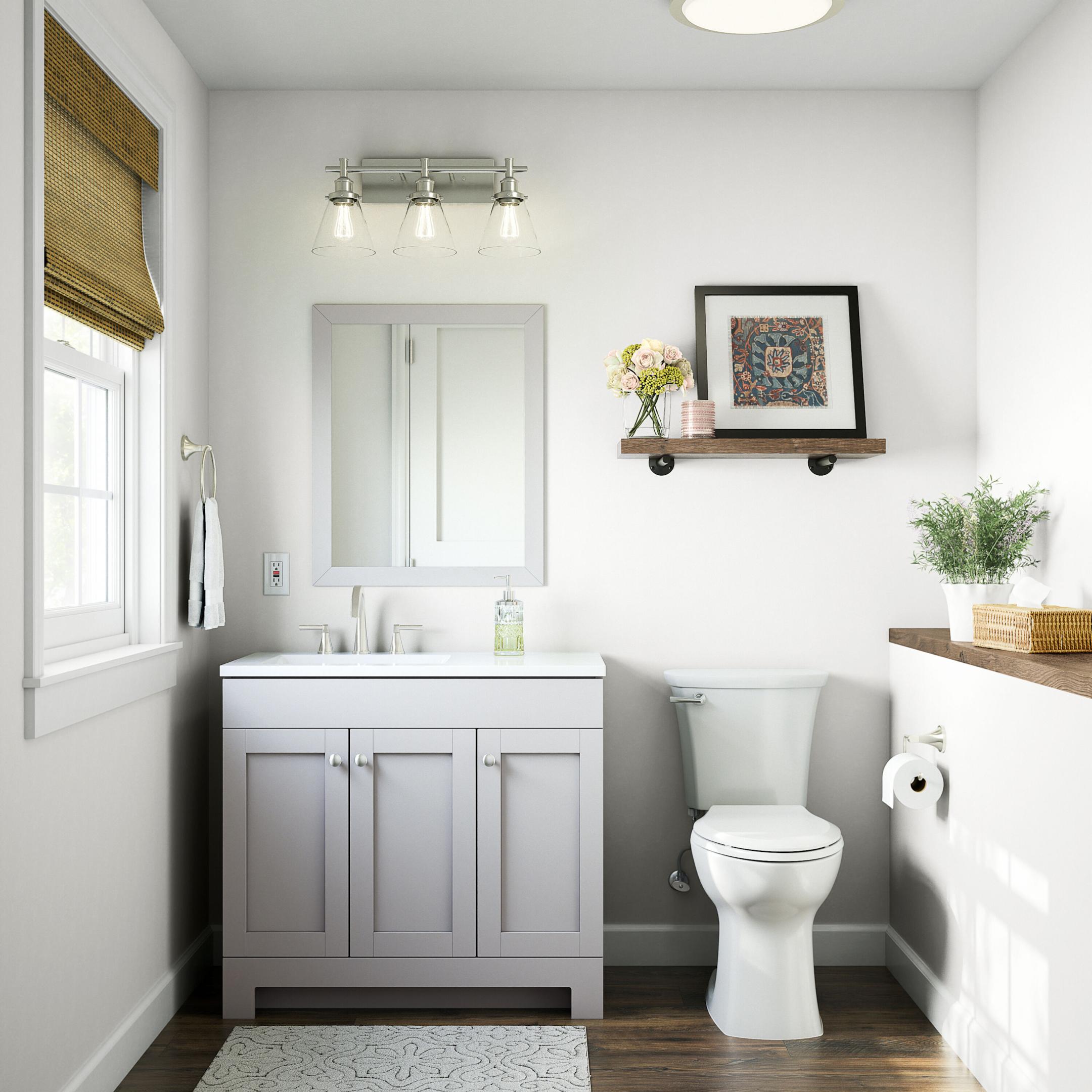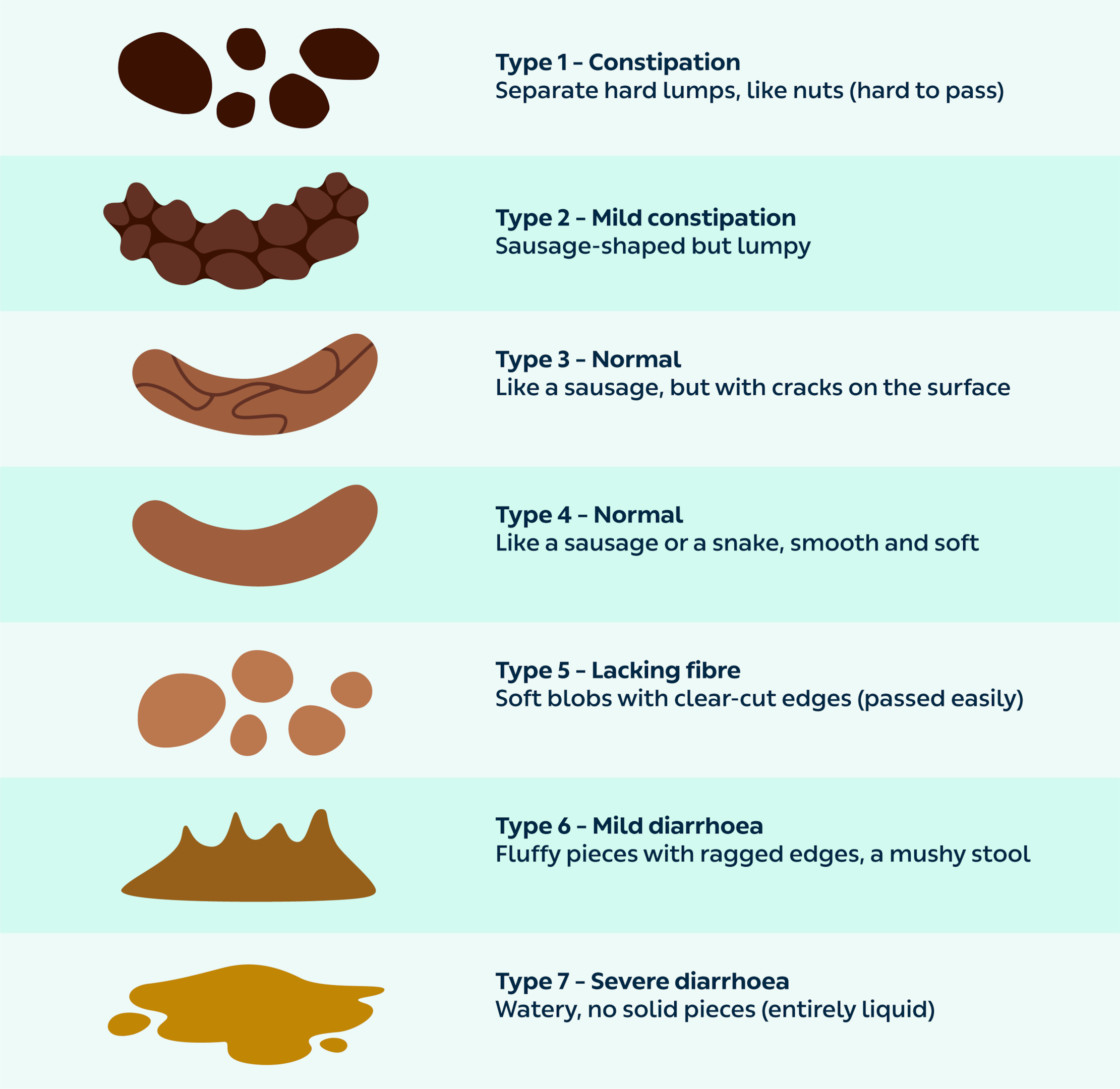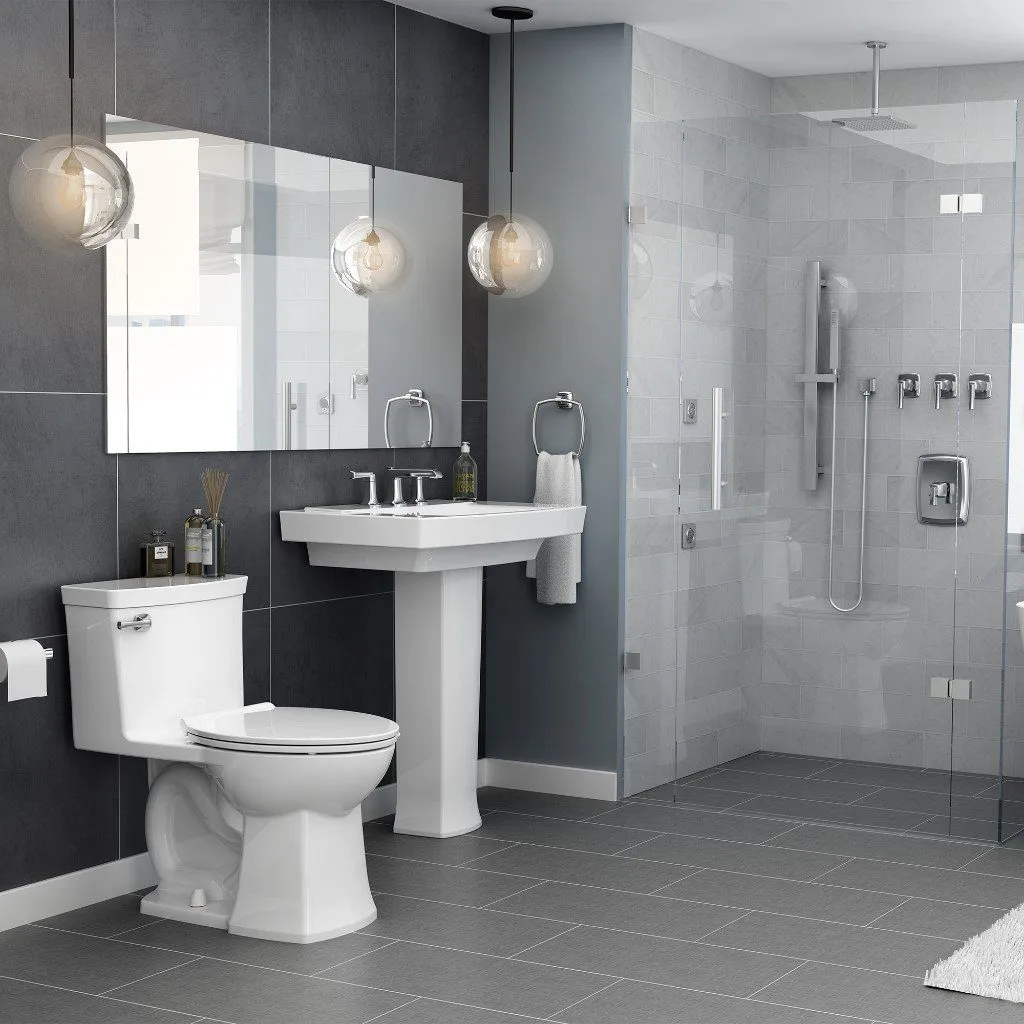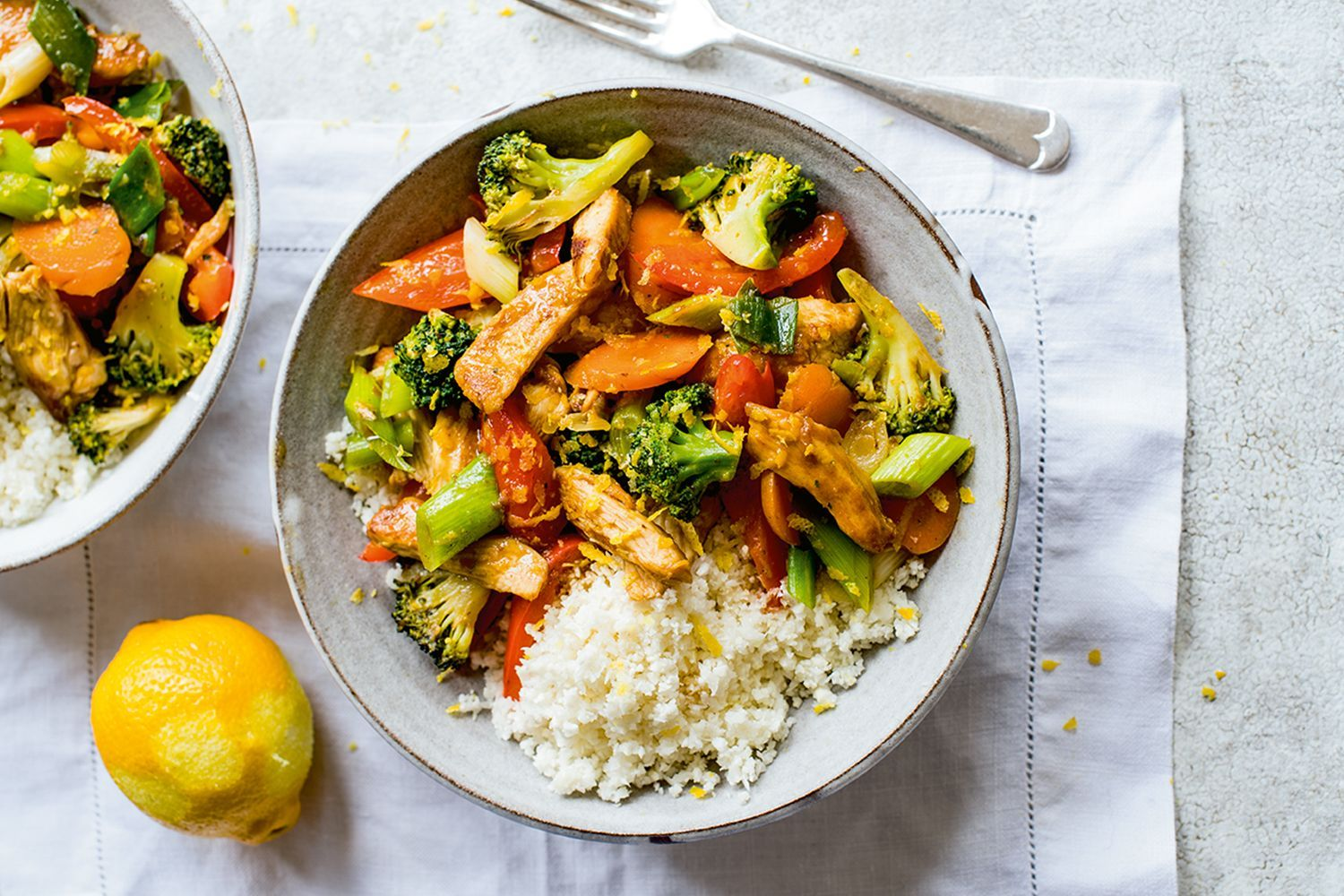Healthy Poop: What It Looks Like and Why It Matters
Different Types Of Poop: What It Looks Like and Why It Matters
Have you ever taken a glance at your poop and wondered, "Is this normal?" Well, you're not alone! The truth is, the appearance of your poop can reveal a lot about your digestive system and overall health. In this article, we'll break down what healthy poop looks like and why it's so important to keep an eye on.
Why Poop Type Matters
While it may not be the most pleasant topic to discuss, the importance of good bowel health cannot be overstated. Your poop can tell you a lot about what's going on with your digestive system, and even your overall health. This is because around 70% of your immune system resides in your gut, and your digestion is linked to everything from your mood to your skin health.
What Does Healthy Poop Look Like?

First things first, let's get one thing straight - there's no one-size-fits-all when it comes to poop. Normal poop can vary from person to person, depending on factors such as diet, supplement intake, and activity levels. However, there are some key characteristics of healthy poop that you should look out for.
Healthy poop is typically around 75% water and 25% a mixture of protein, fats, bacteria, fiber, mucous, and cells. To determine what's considered normal poop texture, health professionals use a clinical assessment tool called the Bristol Stool Scale. This chart breaks down the seven main types of poop and what they mean.
The Different Types of Poop, According to Consistency
Here's a quick guide to the different types of poop, according to the Bristol Stool Chart:
Type 1: Separate hard lumps - This type of poop is difficult to pass and may resemble animal droppings. It's indicative of severe constipation.
Type 2: Lumpy and sausage-like - This poop type has a firm consistency and is also more difficult to pass. It can indicate chronic constipation too.
Type 3: Sausage-like with cracks in the surface - This type of stool is easy to pass and indicates a normal, healthy poop. A sausage-shaped, brown poop with some visible cracks that's easy to pass is the gold standard when it comes to your bathroom break.
Type 4: Smooth sausage or snake-like - A smoother, softer poop is also considered normal.
Type 5: Soft with clear-cut edges - If you find your poop is soft but solid pieces are still well-defined, it could be an indicator that you need more fiber in your diet.
Type 6: Soft or mushy - This type of bowel movement indicates mild diarrhea. If you're prone to this type of poop, be sure to stay hydrated and prioritize eating whole foods instead of processed or spicy foods.
Type 7: Liquid - A fully-liquid poop indicates diarrhea. This type of poop can cause dehydration, so be sure to stay hydrated and consider following an elimination diet to discover any food sensitivities that could be triggering this bowel movement.
The Bristol Stool Chart

Why is My Poop Black, Red, or Pale-Colored?
Are you wondering why your poop looks different than usual? Don't worry, it's normal to experience changes in poop color, and consistency from time to time. In this article, we will explore the possible reasons behind black, red, and pale-colored poop.
Black Poop
If you've been taking iron supplements or certain over-the-counter medications, your poop may turn black. Eating black licorice can also cause stools to darken. This is because iron and other compounds in these substances can affect the color of your poop.
However, if your poop is black, tar-like, and has a strong odor, it may be a sign of a more serious health issue. In this case, it's important to see a doctor as soon as possible.
Red Poop
Seeing red in the toilet bowl can be alarming, but it's usually not a cause for concern. The most common reason for red poop is the presence of blood, which can happen due to constipation. If you have a diet low in fiber, whole foods, and water, you may experience constipation more often.
Women may also notice red-colored poop during their period. This is because menstrual blood can sometimes mix with stool, causing it to appear red. Eating foods with strong red hues, such as beets or drinks with red food dye, can also cause red poop.
However, if you frequently experience red stools and none of these reasons apply, it's important to consult your doctor immediately.
Pale-Colored Poop
If your poop is light yellow, gray, clay-colored, pale poop colors, or very light brown, it may be a sign that something is off with your gut function. This could be due to a variety of reasons, including liver disease, bile duct obstruction, or pancreatic disorders.
In any case, it's important to consult your doctor right away if you experience pale-colored poop. Your doctor can help determine the underlying cause and recommend appropriate treatment.
Green Poop
Green poop can be a cause for concern and may indicate an underlying health issue. There are several reasons why stool may appear green, including consuming large amounts of green, leafy vegetables or foods with green food coloring. However, it can also be a sign of an infection or digestive disorder, such as celiac disease or inflammatory bowel disease. If you are experiencing green poop along with other symptoms, such as abdominal pain or diarrhea, it is important to consult with a healthcare provider to determine the underlying cause and appropriate treatment.

HOW OFTEN SHOULD YOU POOP? THE IMPORTANCE OF REGULAR BOWEL MOVEMENTS
Having a healthy digestive system is essential to overall well-being, and a big part of that is knowing how often you should poop. In this article, we’ll discuss the ideal frequency of bowel movements and when to see a doctor if you’re experiencing any discomfort.
THE IDEAL NUMBER OF BOWEL MOVEMENTS
While there’s no definitive number of times you should poop per day, most experts recommend one to three bowel movements per day as a healthy goal. It’s important to note that healthy bowel movements should be fairly easy and quick to pass, taking less than a minute or two.
However, some people may have a bowel movement only three times per week and still have healthy digestion as long as they don’t experience any other discomforts. In this case, it’s important to focus on adequate hydration and consuming fiber-rich foods.
CONSTIPATION AND HOW TO RELIEVE IT
If you’re experiencing constipation, you may have less than three bowel movements per week and experience discomfort and pain in the process. In such cases, you’ll want to make some lifestyle changes to relieve the symptoms.
First and foremost, focus on adequate hydration by drinking plenty of water throughout the day. Also, incorporate fiber-rich foods into your diet such as whole grains, fruits, and vegetables. These foods will help regulate your bowel movements and prevent constipation.
WHEN TO SEE A DOCTOR
If you’re still unsure about your bowel movements, there are a few signs to look out for that indicate you should see a doctor. These include:
Foul-smelling poop: While all poop has an unpleasant odor, an unusually strong and foul-smelling odor may be a sign of underlying health issues.
Unusually-colored poop: If you notice any red, black, or yellow poop, or pale stools that aren’t related to your diet or medication intake, it’s best to see a doctor.
Infrequent bowel movements: If you have difficulty going at least once per day, it’s best to see a doctor or registered dietitian to make appropriate dietary and activity modifications.
HOW TO IMPROVE YOUR BOWEL HEALTH: TIPS FROM A DIETITIAN

If you're looking to improve your bowel health, you're not alone. Many people experience occasional constipation or irregular bowel movements, and it can be a frustrating and uncomfortable experience. The good news is that there are several steps you can take to support healthy poops. As a dietitian, I recommend the following advice.
Create a Distraction-Free Environment
One of the simplest things you can do to support healthy bowel movements is to create a distraction-free environment. This means limiting phone or tablet usage while on the toilet. When you're distracted, your body may not be able to relax fully, which can make it harder to go. Instead, take the time to fully focus on the task at hand, and you may find that you're able to have a more successful bowel movement.
Define Your Normal
It's important to note that everyone's version of "normal" poop may vary. Be in tune with what looks a healthy bowel movement for you on most days. If you experience occasional, mild constipation only, that may be normal for you. However, if you notice a significant change in your bowel movements, such as increased frequency, diarrhea, or blood in your stool, it's important to talk to your doctor.
Eat a High-Fiber Diet
Eating a diet rich in high-fiber foods is one of the most important steps you can take to support healthy poops. Opt for eating high fiber foods from whole grains, vegetables, fruits, and beans. Men should aim to eat 38 grams of fiber daily, while women should aim for 25 grams daily. Some good sources of fiber include raspberries, lentils, black beans, quinoa, and chia seeds.
Nourish Your Gut Microbiome
Your gut microbiome plays a crucial role in digestive health, so it's important to nourish it with good bacteria. You can optimize your own gut health and digestive health by focusing on microbial diversity. We like incorporating a daily probiotic and consuming fermented foods and drinks. Some examples include yogurt, kefir, kimchi, sauerkraut, and kombucha.
Boost Hydration
Drinking plenty of water and consuming water-rich fruits like cucumber, tomato juice watermelon, apples, and pears can help support bowel movements. When you're dehydrated, your stool may become harder and more difficult to pass. Aim to drink at least eight cups of water per day, and more if you're active or live in a hot climate.
Exercise Regularly
A sedentary lifestyle may let things get stuck or backed up in your digestive tract, so be sure to exercise regularly to help move food through. Even light exercise, such as walking or yoga, can help stimulate bowel movements. Aim to get at least 30 minutes of moderate-intensity exercise per day, such as brisk walking or cycling.
In conclusion, practicing healthy habits consistently can support normal bowel movements. By creating a distraction-free environment, defining your normal, eating a high-fiber diet, nourishing your gut microbiome, boosting hydration, and exercising regularly, you can support healthy poops and improve your overall digestive health.
- Choosing a selection results in a full page refresh.
- Press the space key then arrow keys to make a selection.


